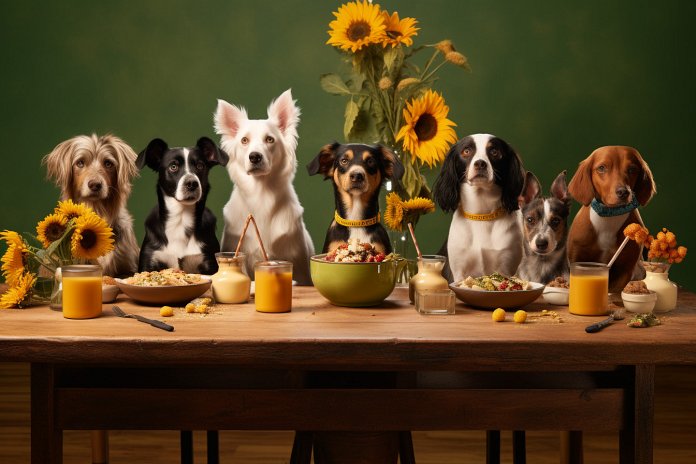
Certain types of beans can be beneficial for your dog due to their high protein and fiber content, as well as their abundance of minerals and vitamins. However, there are certain beans that should be avoided. It’s important to give beans to your dog in moderation, as excessive consumption can lead to gas and upset stomachs. In this article, we will discuss the benefits of certain beans, which beans to avoid, and the best way to serve beans to your pup.
Signs of a Dog Liking Beans
Determining whether your dog enjoys a particular food is relatively easy. You know your dog well and can observe their behavior when trying new foods. Common signs that indicate your dog likes beans include quickly devouring the food without hesitation and begging for more. Your dog may stand close to you and the food, paw at you, stare, wag their tail, perk their ears up, drool excessively, and lick their lips. Other signs of begging for more food include pacing, spinning in circles, and jumping up at you.
On the other hand, if your dog does not like beans, they may spit them out after trying them. They may walk away from the food or try to play with the beans. Signs of dislike may also include pawing at the food, flinging it around, growling, exposing their teeth, or making a snarly face.
Body Language
Here are some signs that indicate your dog likes beans:
– Staring
– Alertness
– Barking
– Wagging tail
– Pacing
– Lip licking
– Drooling
– Ears up
Other Signs
Here are some additional signs that indicate your dog likes beans:
– Pawing at your leg
– Excessive drooling and lip licking
– Staying close to you and staring
History of Dogs and Beans
Beans are legumes and have been cultivated for thousands of years. They were first grown for food in Thailand around 9,000 years ago. Various types of beans, such as soybeans, lima beans, and fava beans, were cultivated around 4,000 years ago. It is unclear whether undomesticated dogs consumed wild beans while hunting and gathering. However, it is possible that as dogs became more domesticated and had access to human food scraps, they may have been introduced to beans.
Science Behind Dogs and Beans
Beans are rich in protein, fiber, potassium, B vitamins, iron, magnesium, and antioxidants. They can help regulate blood sugar levels and are beneficial for dogs with diabetes. Adding beans to your dog’s diet can increase their protein intake without adding more meat. Beans are also low in fat, making them a healthy source of protein.
Training Dogs to Like Beans
If your dog does not like beans, do not force them to eat it. There are other foods with similar nutritional profiles that your dog may prefer. For dogs that enjoy beans, you can add small amounts of cooked beans to their meals. It’s important to cook dried beans first to make them soft and easier to digest. Canned beans can also be used, but be cautious of added seasonings like salt, pepper, garlic, onions, and sugars, as they can be harmful to dogs. Dried beans are a cheaper option and can be prepared in large batches for multiple dogs. Soak dried beans in cold water overnight, wash them before cooking, and boil them in unsalted water until soft. Avoid giving your dog baked beans, spicy beans, or pre-seasoned chili beans. Stick to cooked pinto, black, kidney, soybeans, garbanzo, green beans, lima beans, and lentils.
“Dogs and beans: Deciphering the signs of a canine bean lover”

Tips & Things to Know
1️⃣ Feed beans to your dog in small quantities to avoid gas and upset stomach. Too many beans can cause discomfort for your dog.
2️⃣ Pay attention to your dog’s body language to determine if they like beans or not. Signs of liking beans include gobbling up the food, begging for more, and exhibiting alert and excited behavior.
3️⃣ When feeding beans to your dog, opt for plain, cooked beans without added seasonings or sugars. Avoid canned beans with salt, pepper, garlic, onions, or any added sugars. Stick to safe beans like pinto, black, kidney, soybeans, garbanzo, green beans, lima beans, and lentils.
Frequently Asked Questions, Answered ✅
1. What are the health benefits of beans for dogs?
– Beans are high in protein, fiber, minerals, and vitamins, making them beneficial for dogs.
2. What are the signs that indicate whether a dog likes beans or not?
– Signs that a dog likes beans include gobbling them up quickly, begging for more, standing close to the food, pawing at you, wagging their tail, and perking their ears up.
3. How can you tell if a dog dislikes beans?
– Signs that a dog dislikes beans include spitting them out after trying, walking away from the food, playing with the uneaten beans, pawing at the food, growling, exposing teeth, or giving a snarly face.
4. What is the history of dogs and beans?
– Beans were first cultivated about 9,000 years ago in Thailand and have been found in the tombs of kings in Ancient Egypt. Undomesticated dogs likely did not eat beans as a main source of food but may have been introduced to them through discarded human food.
5. What is the science behind dogs and beans?
– Beans contain protein, fiber, potassium, B vitamins, iron, magnesium, and antioxidants. They can help regulate blood sugar levels and provide a healthy and nutritious source of protein for dogs.